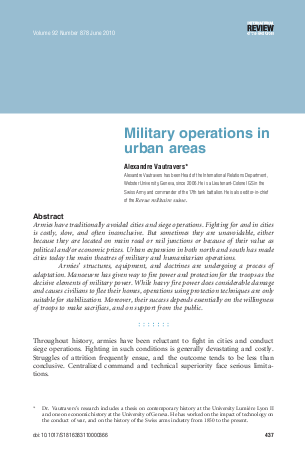
Armies have traditionally avoided cities and siege operations. Fighting for and in cities is costly, slow, and often inconclusive. But sometimes they are unavoidable, either because they are located on main road or rail junctions or because of their value as political and/or economic prizes. Urban expansion in both north and south has made cities today the main theatres of military and humanitarian operations. Armies’ structures, equipment, and doctrines are undergoing a process of adaptation. Manoeuvre has given way to fire power and protection for the troops as the decisive elements of military power. While heavy fire power does considerable damage and causes civilians to flee their homes, operations using protection techniques are only suitable for stabilization. Moreover, their success depends essentially on the willingness of troops to make sacrifices, and on support from the public.
Resource collections
- UN Habitat - Urban Response Collection
- Urban Response - Urban Crisis Preparedness and Risk Reduction
- Urban Response Collection - Community Engagement and Social Cohesion
- Urban Response Collection - Economic Recovery
- Urban Response Collection - Environment and Climate Change
- Urban Response Collection - Housing, Land and Property
- Urban Response Collection - Urban Crisis Response, Recovery and Reconstruction
- Urban Response Collection - Urban Resilience